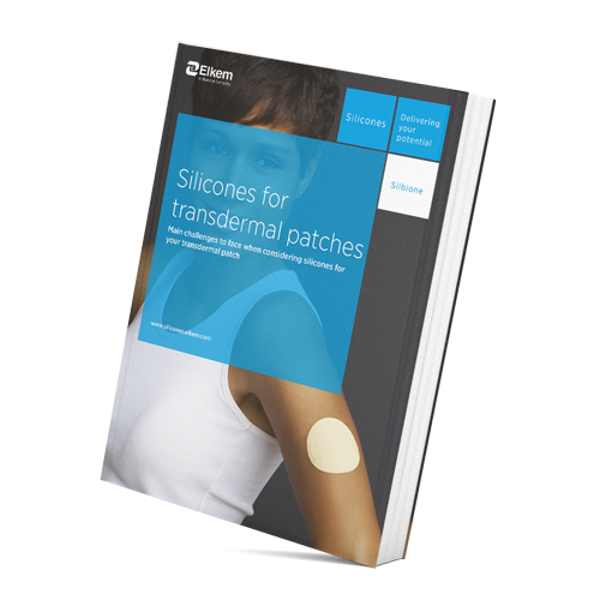- How medical-grade silicones can transform transdermal drug delivery
How medical-grade silicones can transform transdermal drug delivery
Delivering therapeutic drugs by applying substances to the skin is a practice that dates back thousands of years, but it has only been since the 1970s that we have better understood how to permeate the outer layer of the skin to make transdermal substances a viable drug delivery solution. Now that we understand that certain drugs can get through the skin and enter into systemic circulation, development and approval of Transdermal Drug Delivery Systems (TDDS) has continued to grow.
Transdermal patches are devices that are placed on the skin to deliver medication into the bloodstream. They can be used for various applications, including pain management, hormone treatment and nicotine patches. Key advantages include the non-invasive nature of delivering medication into the body gradually and painlessly, as well as being easy to use, without the need for injections or regularly swallowing pills. Dosage is carefully controlled as medication is delivered as small-size Active Pharmaceutical Ingredient (API) molecules over long periods of time.
Advancements in the pharmaceutical industry and TDDS technologies have enabled an increasing number of medications and larger molecules to be delivered transdermally. Additionally, industry 4.0 has introduced technological solutions such as smart patches that enable patients and healthcare workers to monitor the effectiveness of treatment.
Another important area of development is the selection and configuration of support materials, such as the adhesives, which are key factors when it comes to TDDS performance since they’re playing the critical interface role between the patient body and the device.
TDDS support materials: what are the challenges?
TDDS adhesion is critical. Poor surface contact or not adhering for the necessary length of time will significantly impact the delivery or dosage of the drug being administered. Furthermore, patches that need to be frequently replaced or reapplied means continually disturbing the patient and potentially higher medical costs. In some cases, if a patch falls off and is lost, it can be dangerous for people who come into contact with it. When selecting a material, manufacturers must be mindful of tack, peel adhesion and cohesive strength properties. Silicone solutions not only offer good adhesive properties, but they can be worn for a long period of time without causing skin irritation.
Another challenge is the compatibility between the drug and the silicone adhesive. To ensure that the patient receives correct amount of drug over time, manufacturers must select an adhesive which has a good compatibility with the drug over time.. Silicone PSA have proven to be an effective solution, which can be customized as either standard or amine compatible, in addition to Polyaddition Silicone PSA and solventless Soft Skin Adhesives (SSA).
The third challenge is defining the appropriate drug release profile. A material that offers excellent adhesion properties and drug compatibility is still not going to be effective if the drug cannot leave the interior of the TDDS to be released to the patient. A number of factors impact drug release, including material matrix composition, drug solubility and system construction.
The nature of the silicone that the manufacturer chooses has a significant impact on the effectiveness of the drug release mechanism. Typically, the fastest release is seen with silicone products with lower crosslinking densities, such as SSA or PSA. The bigger the mesh size, the higher the drug diffusion coefficient, and therefore the faster the drug release rate. With this in mind, manufacturers must choose the most suitable material based on the release profile that they desire, the molecule weight of the drug being administered, and drug concentration.
Given these challenges, manufacturers are faced with the decision to choose materials that tick every box: adhesive and non-irritable, drug compatibility, and the appropriate release profile. For this, experts in silicone need to be consulted.
Introducing Elkem Silicones for transdermal drug delivery
Elkem Silicones works closely with customers in various industries across the globe to provide innovative silicone solutions. So far, they have served industries ranging from agriculture to electronics, chemicals and healthcare.
Silicones have been used for years in the wound care industry for its innocuity and adhesion properties. Under its Silbione™ brand, Elkem designs medical grades, which are used for applications such as advanced wound dressings.
Going forward, Elkem is working towards building partnerships with pharmaceutical companies to improve the way transdermal patches operate. By embracing silicone solutions, manufacturers can improve the drug delivery ability of transdermal patches and the duration that they can be worn.
